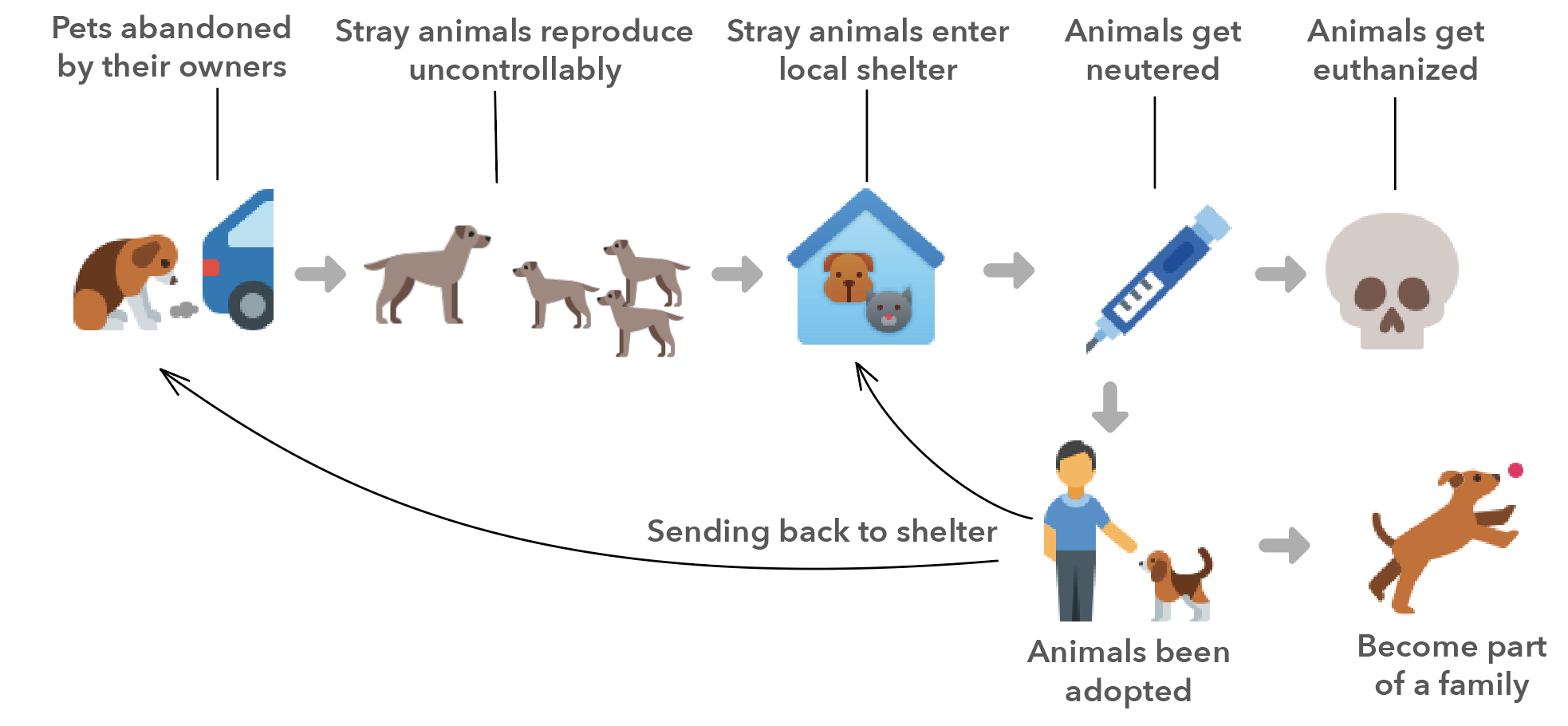
Service Design for Animal Adoption
Pet Soul
PetSoul
The Pet You Most Bond With!
User Interface- Adopter Service
In order to promote pet adoption, an appealing personalised profile is indispensable
User Interface- Donation and Sharing
Animal Shelter Redesign
A simple personality test to see which pets the user matches. For example, some users who like to go out and socialize will be matched with pets that are lively, love to interact with other animals, or some pets with independent personalities.
User Interface- Pet Profile Design
Postcard design
Users are guided by the website to download the mobile app and begin a 18-day evaluation. For 18 days, the user will check in daily and start completing daily tasks. These tasks were all related to the matching pet’s daily routine. The main purpose of this evaluation is to let users experience the time it takes to raise a pet, and manage their time properly.
After personality test, the system will recommend pets with similar personalities according to the user’s personality.
Donation page
Community interface
Design Research
Behavior Record
Trainer Reflection
Through my conversation with Lexie's trainer, I learned that 1-year-old Lexie was so energetic that she could scare adopter away from meeting her for the first time. I also asked the trainer if some adopters would return their pets to the shelter after they had adopted them for a period of time and found that their pets’ behavior and lifestyle were quite different from their own. The answer she gave me was positive. It is a common occurrence that people tend to choose and acquire pets impulsively, leaving relationships and parenting behind.
Interview
Solution for adopter
Every year, an average of 6.5 million dogs, cats and other former pets are abandoned or lost and enter shelters. Yet, only 3.2 million of those were adopted. Many animals return to shelters less than a year after finding a new home. Deciding to adopt a pet is a huge responsibility. When an animal enters a shelter, about 40%~50% are euthanized.
Common Reasons of Pet Abandonment
The life of a stray animal is extremely difficult and dangerous. They are more likely to be attacked and brutally tortured by humans, and are often run over by fast-moving cars. In addition to the physical pain, dogs endure emotional disorders after being abandoned. Dogs who lose their family experience a severe psychological trauma, from which recovery may not be possible.
Being Returned…
Cindie. K.
31 year-old, interior designer
3 cats (1 is former stray)
Kyuri. K.
40 year-old, veterinarian
1 dog (adopted froom shelter)
Fortunately, in the United States, the number of dogs and cats entering animal shelters annually has declined from approximately 7.2 million in 2011 to approximately 6.3 million in recent years. This decline can be partially attributed to an increase in the percentage of animals adopted and an increase in the number of stray animals successfully returned to their owners.
Where do people adopt their pets
Field Research
200 Centre St, New York, NY
Animal Haven’s Adoption Process
The shelter staff asked me to choose a pet I wanted. I chose Lexi because I saw the sunny smile in her profile photo. The staff also asked me to go for a walk with lexie to get to know her better. However, problems quickly arose when I met lexie. Lexie was unusually active, especially when the staff had a treat. She would keep jumping on the staff and ask for a treat.
To learn more about the conditions of today’s pet shelters, I visited a pet shelter in New York City SOHO neighborhood. In the whole process of research, I played the role of a person preparing to adopt a pet, and I recorded the whole process of interacting with the pet.
While more and more pets are being taken in, there is also a “mismatch” between pets and owners. According to scientific research, animals are returned to shelters following adoption in 7% to 20% of all adoptions. The reasons for return vary, but they can include owner-related reasons, such as the owner’s inability to care for the animal, and animal-related reasons, such as the animal’s behavior or health issues. Animal shelters are feeling pressure with too many potential pets and not enough people adopting them, and animals are sitting in shelters for longer time than they have in four years.
Lexie is a very smart dog. She learned to get treat with the right behavior. When the handler learns of her little trick and stops rewarding her, Lexie doesn’t hesitate to jump on the handler and take the treat for herself.
“How do you get along with your stray friends?”
“Initially, the dog struggled with health issues, including diarrhea from scavenging, and exhibited disruptive behavior, such as yowling at night and raiding the trash. It felt like caring for a newborn with the agility of a gymnast and a penchant for mischief. “
Hannah. D.
26 year-old, graduate student
1 dog (adopted froom shelter)
“My dog is a former stray. She’s playful and inquisitive but easily startled. While she’ll accept treats from my hand and sniffs it curiously, she retreats when done, never leaning in for more contact. Attempts to pet her result in her running away. The only time I can briefly touch her is when she’s engrossed in eating. . However, her aversion to hands makes me suspect past trauma. I’m at a loss on how to proceed in building trust with her.”
Manytimes you have no idea what kind of baggage you’re inheriting, be it behavioral or medical. You should expect it to be a much harder journey than adopting a kitten. In part because training becomes harder the older an animal gets, so your adopted cat may never fully adjust to your new house rules. The financial burden of veterinary bills should not be underestimated either.






















































